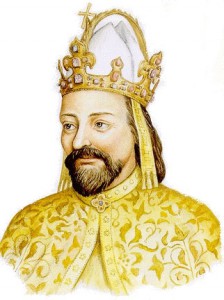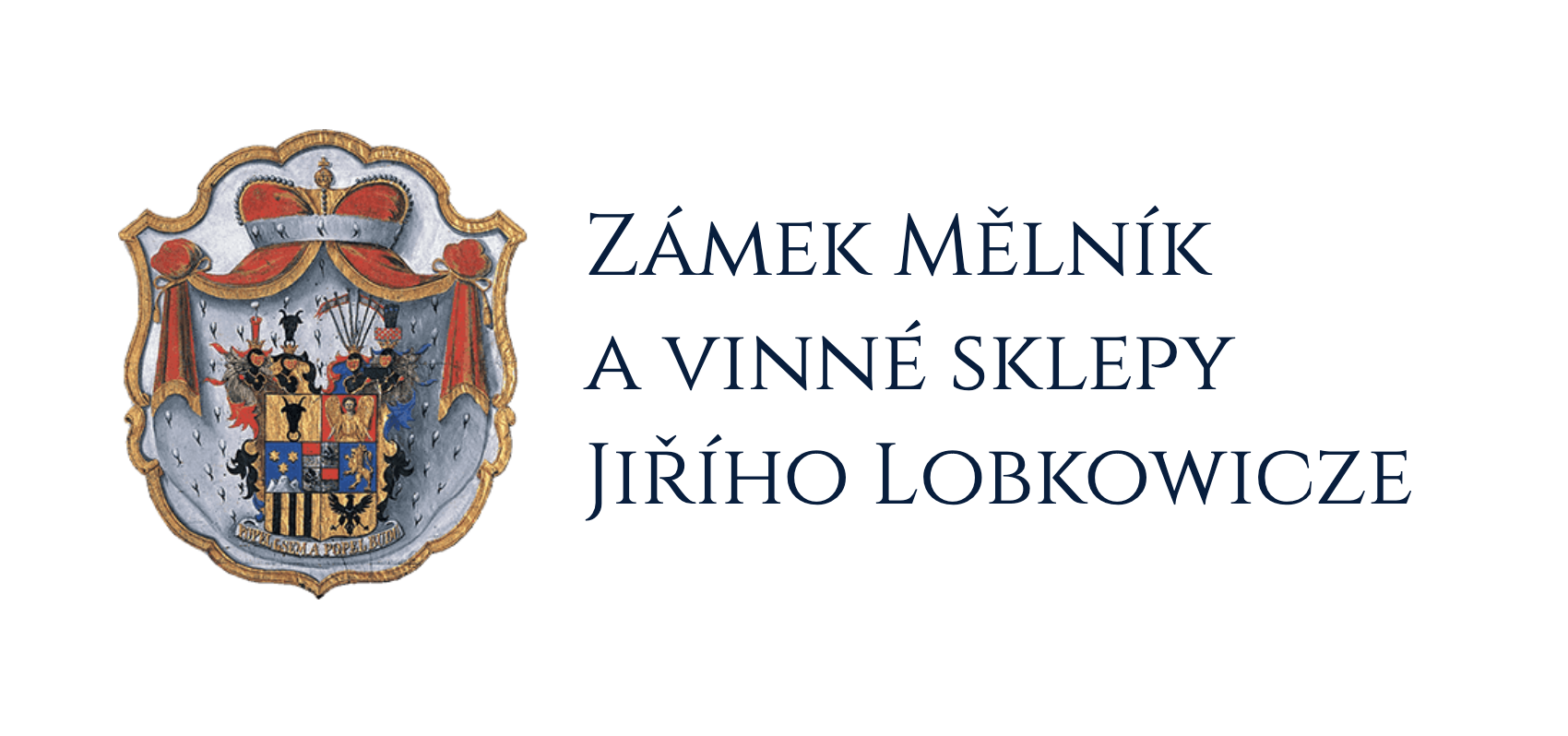History of chateau Mělník
Chateau Mělník, originally called Pšov, towers above the vineyard-covered slopes overlooking the confluence of the Elbe and Vltava rivers. The name Pšov is derived from the name of the Slavic tribe of the Pšovans and has been preserved until today in the name of the Pšovka stream and the municipal district of Pšovka (formerly a village of the same name).
According to the Czech Chronicle of Kosmas, the last duke of the Pšovans, Slavibor, married off his daughter Ludmila to Bořivoj I, duke of Bohemia. Legend says that Ludmila often stayed here and brought up her grandson Wenceslas who grew vines there. The story of St. Wenceslas is depicted on the lunettes. Drawn by Karel Škréta they are to be admired on the first and second floors of the chateau.
How Mělník got its name
Originally the chateau was wooden, but at the end of the 10th century it was probably replaced by a stone mansion. You can still see the remains of it – it is the tower-like part of the western wing of the chateau. The manor was then held by Princess Emma, wife of the Boleslav II, Duke of Bohemia, and it was on her silver denarius where the name “Civitas Melnic” appeared for the first time.
The chateau and the town were then held by the wives of prominent Czech rulers. Even Elisabeth of Bohemia stayed there quite a long time after her husband, John of Luxembourg, took their three eldest children from her custody. It was during the last Přemyslids in the second half of the 13th century when Mělník got its form of a gothic castle.


Charles IV, Holy Roman Emperor
Charles IV declared Mělník a royal dowry town with a number of feuds and contributed to the development of winemaking in Mělník region when he imported vines from Burgundy. Charles’s last wife, Elisabeth of Pomerania lived in Mělník until her death in 1393, and it was probably she who had the chateau chapel built and dedicated to St. Luis at the time (now it is dedicated to St. Ludmila).
The last to reside there were the wives of the king George of Poděbrady. Around the 1580s, late Gothic modifications were made to the chateau within which the entrance gate to the chateau was built. After 1579, Mělník was held as a feud of Rudolf II. by Jiří Popel the Elder of Lobkowicz, and it was probably then when the simple sgraffiti on the west wing in the courtyard were made.
During the Thirty Years’ War, the chateau became dilapidated and in 1646 it was pledged to Hermann Czernin of Chudenice. He not only restored it and made it inhabitable again, but in 1687 he bought the chateau and the whole Mělník manor from Leopold I, Holy Roman Emperor. As a new owner he had the southern wing of the chateau built up and added a new building.
During the 18th century, the owners gradually gave preference to the nearby Hořín chateau and Mělník remained primarily the administrative centre of the manor.
Chateau Mělník in modern history
In 1753, the last heiress of the Czernin manor, Marie Ludmila, married August Antonín Josef (Eusebius) Lobkowicz. From then on, the Mělník line of the Lobkowicz family owned the chateau until 1948. In 1992 it was returned to the family again.
At the end of the 19th century, rare paintings and furnishings from the Lobkowicz collections were installed in the chateau and a wine museum was established. In 1931, Jiří Kristián Lobkowicz traded the brewery in Pšovka for the vineyards of Leopold Lobkowicz at Dolní Beřkovice.
